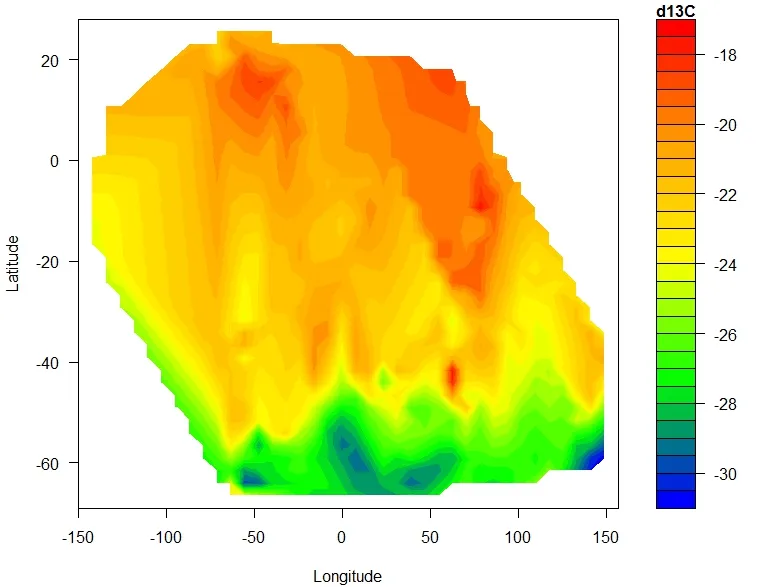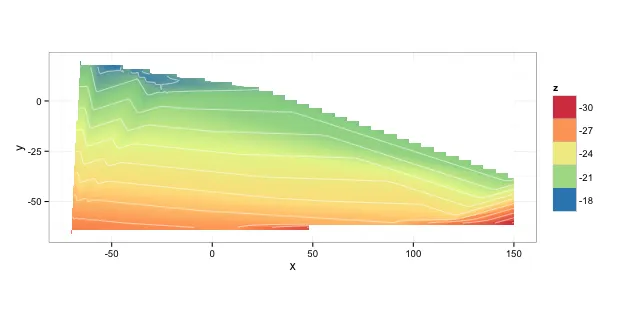我想绘制使用filled.contour()创建的这个图形,但在ggplot2中,我该如何做到这一点?
我想使用ggplot2,因为它的图表约定更容易理解。我想使用filled.contour()的原因是,我尝试了geom_tile()和image.plot(),它们都创建了非常类似瓷砖的输出,而我需要一个类似于filled.contour()的输出。
这是我的图像:

代码:
library(akima)
df <-read.table("Petra_phytoplankton+POM_xydata_minusNAs_noduplicates.txt",header=T)
attach(df)
names(df)
fld <- with(df, interp(x = longitude, y = latitude, z = d13C))
filled.contour.ungeoreferenced <-
(filled.contour(x = fld$x,
y = fld$y,
z = fld$z,
color.palette =
colorRampPalette(c("blue", "green", "yellow",
"orange", "red")),
xlab = "Longitude",
ylab = "Latitude",
key.title = title(main = "d13C",
cex.main = 1)))
数据片段:
latitude longitude d13C
-65 -70 -27.7
-61 150 -32.2
-61 150 -28.3
-60 116 -26.8
-60 116 -24.7
-47 38 -24.8
-38 150 -20.5
19 -65.7 -19.9
19 -65.5 -18.5
18 -60.7 -20
18 -58.5 -18.2
18 -57.8 -19
17 -55.4 -18.6
17 -50.8 -18
17 -47.1 -18.3
17 -45.5 -19.4
16 -43.3 -17.9
15 -40.7 -18.5
14 -39.3 -19.9
12 -36.7 -19.9
12 -36.2 -19.9
11 -34.4 -19.2
10 -32 -18.5
9 -30.3 -19.3
8 -29.2 -19.4
7 -26.6 -18.2
7 -25.5 -19.3
6 23.9 -20
3 -21.3 -20.4

